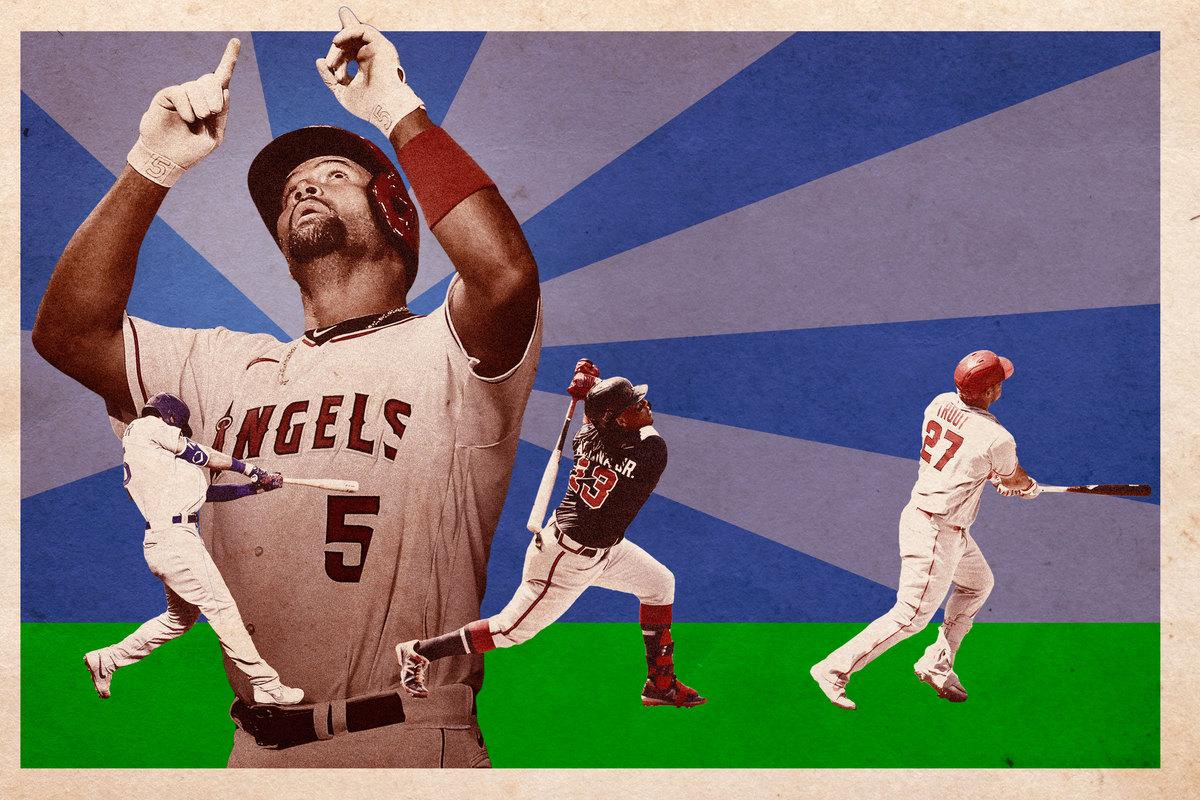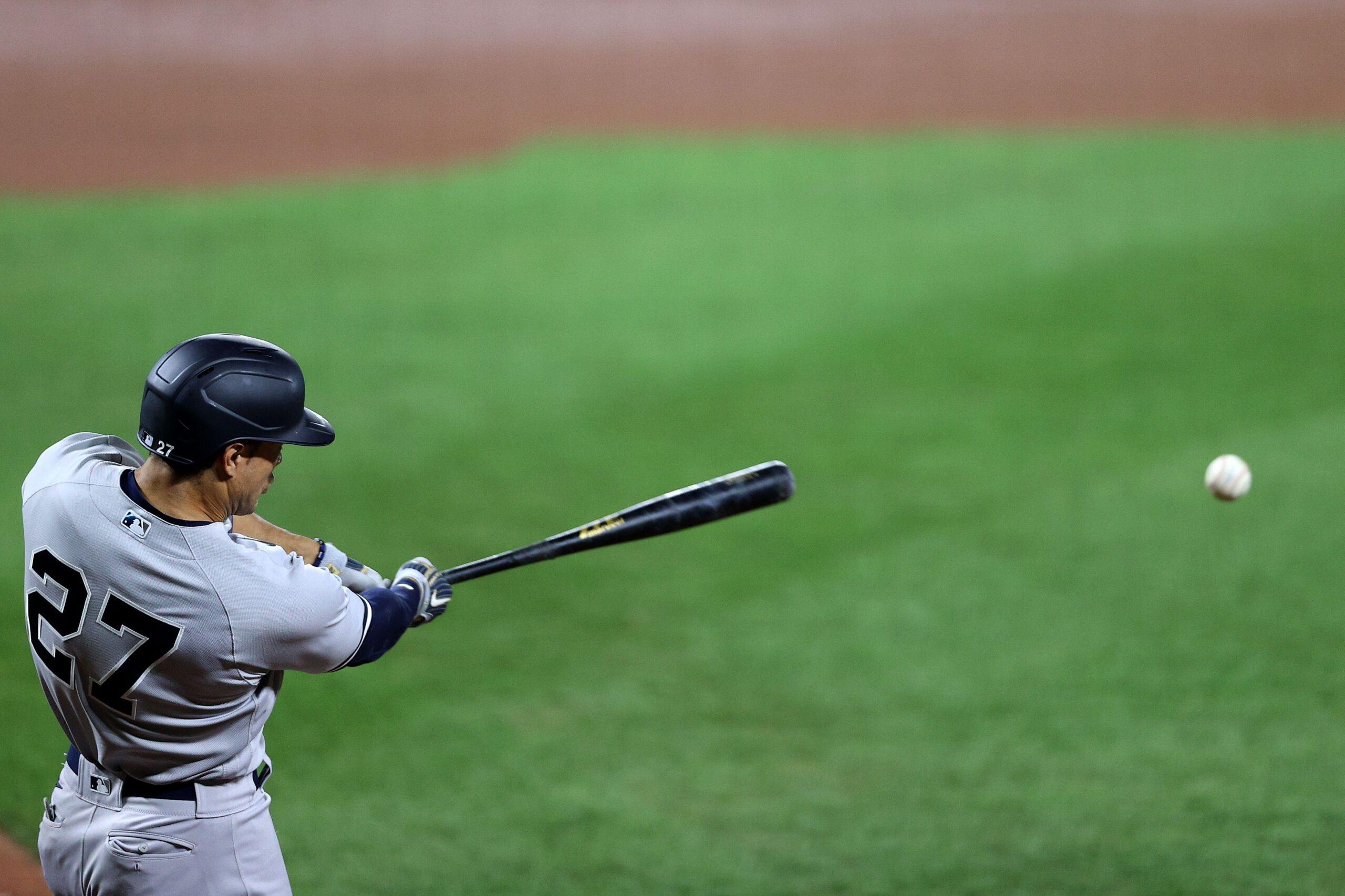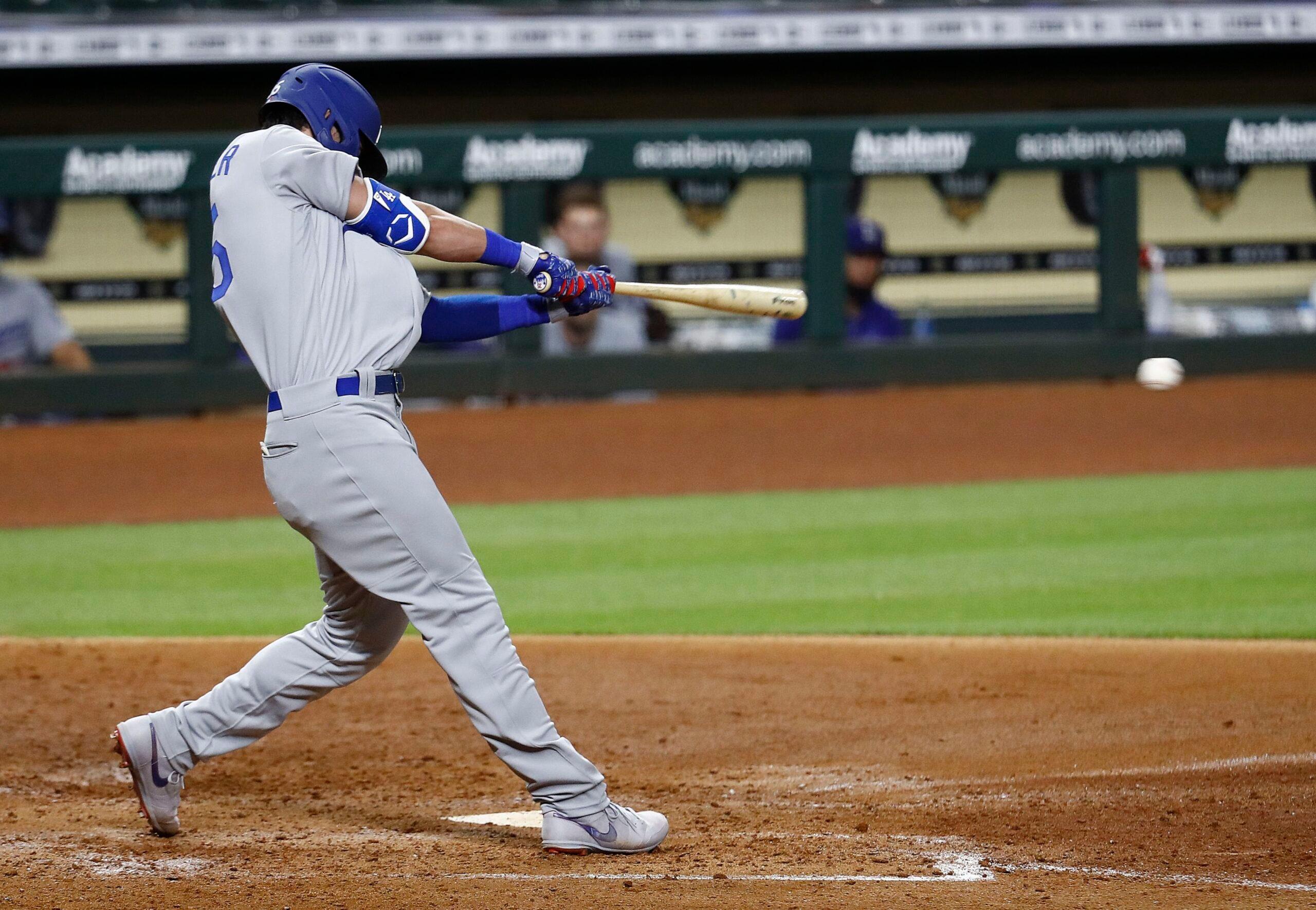
As of Thursday night, Angels first baseman Albert Pujols sits (or stands, he hasn’t “run” as such in years) at a career home run total of 657. That’s truly rarefied air; Pujols is just three homers from catching the legendary Willie Mays for fifth on the all-time leaderboard, and even at 40 years old and in a shortened season, he’ll probably get there by the end of this year.
But the three-time MVP will probably run out of time before his next big home run milestone: Alex Rodriguez’s 696 career home runs. As incredible as this might sound to someone who’s followed baseball in the past decade, Pujols’s 10-year, $240 million contract with the Angels is almost up. In the middle of the second historic leaguewide home run binge of the past 25 years, Pujols is the only active player with at least 500 home runs (Miguel Cabrera is second at 480), and the only person with a realistic shot at changing the career top-10 list in the next decade.
That raises two obvious questions: Do any active players have a realistic shot at hitting 700 career home runs? And Pujols notwithstanding, could anyone even make it to 600? Here are the possible candidates:
Albert Pujols
Assuming Pujols stays healthy and there are no more COVID-19-induced schedule changes in the next 14 months, Pujols will have 215 team games between now and the end of his current contract. Since 2016, Pujols has averaged a home run every 5.7 games. Let’s assume he continues to perform at that level and doesn’t decline at age 40 and 41, and that Angels manager Joe Maddon still chooses to play Pujols every day for the next two seasons (neither of which is a sure thing). Pujols would end up with 694 homers—two short of Rodriguez for fourth all time, and six short of 700.
Absent an improbable turning back of the clock, Pujols would need more time to reach 700. Maybe there’s a world in which he re-signs with the Angels, but it’s hard to imagine Maddon and GM Billy Eppler signing up for more uncomfortable conversations about why they’re sitting one of the greatest hitters ever in favor of Matt Thaiss—or why they’re playing a 40-something with a .260 OBP over Thaiss. If this had been a 162-game season, Pujols would’ve had a good shot, but … oh well.
Now, if he gets that close, it’s not out of the question for a hitter with Pujols’s achievements to bounce around at the end of his career. Mays did it, as did Hank Aaron, Babe Ruth, Jim Thome, Ken Griffey Jr., and Frank Robinson. (Beyond his baseball career, Pujols has a 10-year personal services contract with the Angels, but it kicks in only once he retires, theoretically freeing him to chase home run no. 700.) If the Angels don’t retain Pujols, the Orioles could use him: They have no real shot at contending currently and could use some star power, as well as an extra attendance boost from those who might come out to watch Pujols do the one-man box step for the 700th time. The Royals could also use him, and they could also offer a tidy homecoming for a player who played his high school and college ball in the area.
The biggest obstacle to a reunion in Kansas City is this: Pujols has been really awful, even at the plate, for years now. Aaron posted a 98 OPS+ in two seasons with the Brewers, while Thome posted a 131 OPS+ the season before his farewell tour with the Phillies and Orioles, and a 182 OPS+ the year before that. Pujols hasn’t been a league-average hitter since 2016, and from 2017 to 2019, he’s hit .243/.293/.407—an OPS+ of just 88, or a tick above José Iglesias’s career average. It’s not impossible for Pujols to reach no. 700, but he’s got to want to get there, badly, and some team is going to have to help him out.

Giancarlo Stanton
There are nine active players, including Pujols, who have at least 300 career home runs. Cabrera is only 20 dingers away from 500 and will likely get there as long as he doesn’t wake up one morning in the next year and a half and decide to give up baseball to play water polo. Edwin Encarnación, at 415, is close enough to have a distant but nontrivial possibility of reaching 500. Most of the rest of the players in that group, though, are winding down their careers—except for Stanton.
Stanton started out strong—by the end of his age-24 season, he’d taken 154 low-speed trips around the bases. At the time, only nine players had hit more home runs by that age, including Pujols. Eight of those players are members of the 500 club, but among the five most prolific home run hitters ever, only Rodriguez had hit so many at such a young age. Since then, Stanton has turned in a 59-homer campaign that won him the NL MVP award in 2017, and lost the equivalent of a season and a half to injury.
From age 25 to age 29, Stanton averaged un coup de circuit every 3.4 games, but averaged only 106 games a year. If he’d played 150 games a year and continued to homer at that rate, Stanton would have ended his 20s with 372 home runs, the fourth most by that age. Assuming Stanton played through his age-40 season, he would have needed just 21 homers a year to reach 600 and 30 a year to reach 700. Even Barry Bonds’s record might have been within reach at that point: 35.5 a year if he played until age 40, just 30 if he played until 42.
But in addition to losing prime years to injury, Stanton’s losing another two-thirds of a season to the pandemic. If he hits 18 bombs this year—a realistic figure given his home run rate in the past five years—he’ll bring his career total to 328. That would leave him less than halfway to 700 and 272 short of 600. Only 13 players ever have hit that many four-baggers from age 31 on, and only five have hit 372.
As Stanton approaches the age when normal people start groaning as they bend over to tie their shoes, it is unlikely that he’ll become less injury-prone than he was in his 20s. Sure, Stanton is still only 30 and just 190 home runs from 500, which makes him a near lock to get there; if he stays healthy and productive he could hit 500 as soon as 2024. If that happens, 600 or even 700 home runs become distinct possibilities. But given his injury history, Stanton will need to put in a couple of more seasons like 2017 and 2018 just to get back on track.
Mike Trout
In order to hit 600 home runs, let alone 700, you have to start early. The 10 most prolific home run hitters in MLB history fall into two categories: players who were big league regulars by age 21, and Jim Thome. (Though as is so often the case, the rules don’t apply to Ruth, who was a big leaguer at 19 but a full-time pitcher until he was 23.) The only member of this group who played NCAA baseball, Bonds, was in the majors within a year of being drafted. Late bloomers just don’t make the 600 club.
In the 2010s, there were two famous teenage debutants who went on to become MVP-caliber performers: Trout and Bryce Harper. Harper is tied with Aaron for the 12th-most home runs of all time through age 26, but he hit 40 home runs only once in a season. At his current pace of one home run every five career games, he has a shot at reaching 600 around the time his contract with the Phillies expires. I suppose that’s so far off that humanity may have achieved singularity by then, and Harper would be free to pursue Bonds’s career record as a Kurzweilian human-robot hybrid. Until then, Harper would need to at the very least maintain his pace, which—as I mentioned with Stanton—becomes less likely with age. As it stands, he’s not a threat to reach 700 home runs.
Trout, however, is. Through the first eight full seasons of his career, Trout averaged 35 home runs a year. Assuming we get through all 60 games this year, Trout will end his age-28 season with 300 homers, almost on the dot. From there, he’d need 400 bombs from age 29 until the end of his career, a feat achieved by eight players in MLB history, including six of the nine members of the 600-dinger club. There’s a chance Trout hits a wall around age 30, just as Pujols did. But given his batting eye and incredible natural athleticism, it’s also possible that he bulks up (insofar as that’s possible for a man who already looks like he could squat a minivan) and turns into an all-out slugger in his professional dotage.
Between that and the fact that, like Ruth, Trout has a habit of transcending the physical laws of baseball, I find him more likely to hit 700 home runs in his career than any other active player, including Pujols.

Cody Bellinger
It’s obvious because it’s true: Guys with top-end power hit lots of home runs. So why give Bellinger an edge here over, say, Aaron Judge or Pete Alonso?
The answer, again, is age. When the 2019 season ended, Bellinger was a month younger than Judge was when he played his first MLB game, and Bellinger had the same number of career home runs then (111) as Judge does now. That number put Bellinger 17th all time through age 23, while Judge’s 110 career home runs through age 27 put him 215th all time at that age. Bellinger’s gaudy early numbers make their own compelling case for his ability to break into the all-time top 10, but the 25-year-old’s chances are even better now than they were his rookie year.
As a rookie, Bellinger went yard 39 times but struck out in more than a quarter of his at-bats. The next season, he suffered a moderate power drop, knocking just 25 dingers. But last year, the big lefty reinvented himself as a more selective, more mature hitter, upping his walk rate by a third and his batting average by 40 points, while recovering his power and cutting his strikeout rate to just 16.4 percent. Big dudes who mash taters come and go, but Bellinger’s transformation into a great all-around player indicates that he’s the kind of adaptable athlete who could have a 20-year career.
This contrasts somewhat with Judge, whose record-setting exit velocity and rookie home run total earned him a place among the premier power hitters in the game. But even without a four-year head start on the Yankees outfielder, Bellinger is also a better athlete than Judge, has a much cleaner injury history, and has evolved as a player since 2017. These three points, in addition to his youth, would lead one to believe the 2019 NL MVP will age better. In order to even reach 500 home runs by the end of his age-40 season, Judge would have to hit 30 home runs a year for the next 13 seasons. He has only one 30-homer season under his belt now.
Like Judge, Alonso was a college slugger who debuted at age 24. Unlike Judge, Alonso found his feet immediately and hit 53 homers as a rookie. There’s some precedent for a player like Alonso to challenge the 600-homer mark. In fact, Mark McGwire—another right-handed college first baseman who set the rookie home run record—came within just 17 round-trippers of being a literal 600-homer Mark.
McGwire played parts of 16 seasons in the majors, the fewest of anyone in the 500-homer club. And that includes an 18-game rookie cameo and six other years in which he missed more than 50 games due to injury. Aaron played almost twice as many career games as McGwire did. Nevertheless, McGwire crammed 583 career home runs into his relatively brief career, and if Alonso keeps making the beast with four bases 50 times a year, he could do the same.
Of course, McGwire had two advantages over Alonso. The first is that he debuted a year earlier—Alonso hit 53 home runs in his age-24 season, while McGwire had 52 career home runs by the time his age-24 season began. The second is, at the risk of being indelicate, a boatload of PEDs. You’ll notice that there’s a strong correlation between PED usage and high home run totals—from Bonds, A-Rod, and Sammy Sosa, to Mays’s links to amphetamine use, to Ruth’s attempt to inject himself with the extract of sheep’s testicles. So I guess cheating is always an option.
Ronald Acuña Jr.
On a very basic level, getting to 700 home runs is a math problem, and there are two ways of getting there: average 50 home runs a year for 14 seasons, or average 35 a year for 20 seasons. Ruth took the first route: The Bambino hit 30 homers in 13 of his 22 major league seasons. Those 13 seasons came in a 14-year span from 1920 to 1933. He reached 40 homers in 11 of those seasons, and 50 homers in four. Those 14 seasons constitute 89 percent of his career home runs.
Aaron took the second. Despite spending 33 years as baseball’s all-time career home run leader, Aaron never hit 50 in a single season. Instead, he put up 20 or more every year from 1955 to 1974. He had fewer seasons with 45 home runs (two) than Sosa had seasons with 60 (three), but he had more seasons with 20 home runs than Sosa had seasons in the big leagues at all. Aaron is proof that a guy who plays well enough for long enough doesn’t need elite power to put up elite home run totals. He just needs to put up above-average totals over an extremely long period of time.
Which brings us to another Atlanta Braves outfielder who debuted at 20 and is thought of as a great all-around player more than a player with elite power. Acuña sent 41 packages by air mail last year, and I doubt he’ll ever hit 50 in a season. But through his age-21 season, he already had 67 dingers (tied for fourth most of all time at that age) and a spot in the middle of the Braves’ order locked down for as long as he cares to occupy it. As opposed to someone like Alonso, whose primary value is as a power hitter, Acuña is still an MVP-caliber player even if he’s hitting only 20 or 30 home runs a year—which over a long enough timeline would allow him to continue stacking up home runs without putting up eye-popping individual totals.
Whether it’s Pujols, Trout, Acuña, or someone who hasn’t debuted yet, that’s probably the most likely path for the next 700-home run hitter. Even under the most favorable circumstances, hitting 50 home runs in a season is a titanic achievement, one that’s incredibly difficult to replicate over and over unless you’re actually Babe Ruth. Aaron’s route, however, is easier to chart: Dozens of players can hit 35 home runs in a year. Of those, a few can do it consistently, and within that set is a smaller subset of all-time greats who can keep up that consistent production for 20 seasons. Will Trout, Bellinger, or Acuña be among them? Probably not. But they’ve put themselves in a position to have a chance.